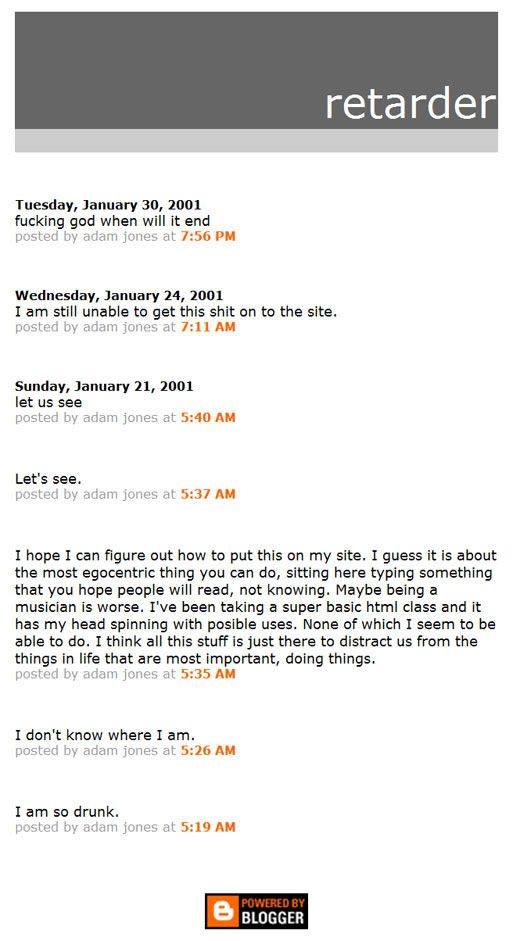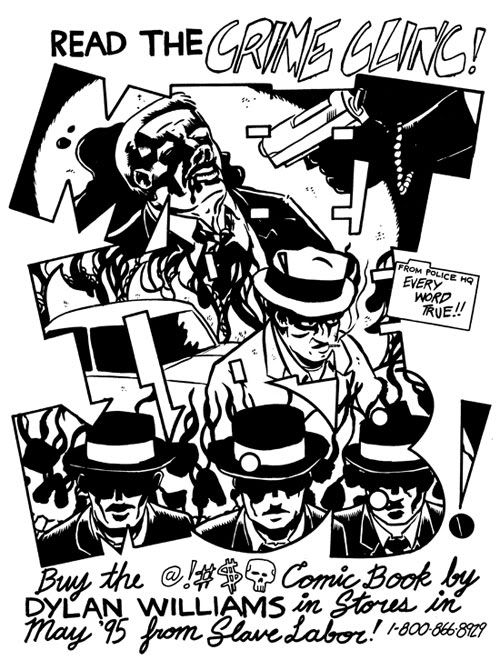Sometime in 1997 Dylan came down to LA to hang out when I was in town to work on a writing project (at that time I was actually living in Chapel Hill, NC and I believe Dylan was living in Olympia, WA). For maybe a week, we were both crashing on the floor of a movie producer’s apartment in Miracle Mile. One interesting thing I remember vividly from that week was on one of our walks around the neighborhood, we stumbled upon a small, mystery bookstore. What was amazing about this bookstore, was that they apparently also screened prints of rare film noir and mystery films after hours. We went back there later in the week to catch something, I don’t remember what - nothing special, but what was great was just the experience. Being in a little bookstore after hours, with shelves pushed away and watching some extremely obscure film with 20-30 strangers. It felt like being part of a secret world, a very unique experience.
A decade or more later, when Dylan opened his own store in Portland, Oregon with Tim Goodyear, The Bad Apple, he apparently ended up doing the same thing, showing movies, mostly to his friends, after hours in the store. I know he really enjoyed that, because when I saw him this July, he especially mentioned to me how much he missed doing the screenings (while he had been sick in the first half of 2011), and now that he was getting better (he was supposedly on the road to recovery when I saw him in July), he was really looking forward to being able to start up his screenings again. Being able to share his love of all kinds of movies with others was something that seemed to be a very pure pleasure. I thought it was really great, how he was able to take that weird experience we’d had in Miracle Mile all those years ago, and duplicate it, improve upon it (maybe), and share it with others. He was good at making things others just dreamed about, actually happen. I wish I’d been around Portland for some of those screenings too.
Friday, December 30, 2011
Thursday, December 29, 2011
Wednesday, December 28, 2011
Murder Can Be Fun (Revised)


This is the original art, and the published version of the 5-page comic Dylan made for the Murder Can Be Fun comic book, published by Slave Labor in February 1996. It was based on a true story of The Great Train Wreck of 1918, the deadliest train accident in U.S. history.
He used an experimental approach on this one with loose (for him) inking, sgraffito (such as where he scratched out the words "Oh Jesus H. Christ," and using a thick application of pro-white to paint over certain areas. The areas of black and white were inverted before it was printed. I thought he was nuts when he was drawing this, and I still think it is not entirely successful. For example, we disagreed about his use of vernacular language for his characters here. But my opinion on it has changed through the years, and I have grown to really like this comic. The art is so expressive and beautifully loose. Sadly, though I have stored these pages well, the lettering has begun to fade and migrate through to the back of the bristol paper. Download a pdf of both the original and the published artwork here.
Tuesday, December 27, 2011
FRANK ROBBINS 1917-1994 by Dylan Williams
As a young kid growing up in the 70's I can think of only a hand full of comic artists who's styles I recognized and looked for ... Jack Kirby, Steve Ditko, Herb Trimpe, Alex Toth and most of all Frank Robbins. The Invaders, Captain America, Ghost Rider, and (above all) the Human Fly, were some of my favorite comics as a kid, and one man made them look the way they did.
Only in adulthood did I find out that this above average "superhero artist" had been one of the real, greats of the newspaper adventure strips and the comics medium in general. He began drawing strips instead of making money from serious artforms.
His first job, in 1939, was drawing Scorchy Smith (an aviation hero strip once drawn by Noel Sickles). At first Robbins didn't write it, but after eight months he was doing it all. He continued with Scorchy until 1944 when he was hired by a rival syndicate to draw his own version of Scorchy: Johnny Hazard.
At first Johnny Hazard did seem like just another clone in the world of strips (although the drawing was, of course, nearly without peer). Soon the story began to prove it's own though. The stories and art became intensely moody and subtle. Pictures of sad dead bodies lying in the bleak snows of Eurasia. To me, his pictures/words are like the best of German Expressionism.
His life from there seemed prosperous and healthy, but thanks to the messed up world we live in, Robbins art suffered. He was told by editors to tighten up his art to look more like the slicksters of the day. And like a good commercial artist, he did it. While his drawing ability was never (could never be) lost, his vitality was. The strip Johnny Hazard was drawn until 1977 by Robbins (and probably assistants). He began drawing comic books in the 1960's and continued until the late 70's. His comics are great (really great), but the run of Johnny Hazard from 1944 to the mid-50's are some of the greatest stuff ever done in comics. Setting a standard that the rest of us will aspire to, but only once in a lifetime (if we're lucky) achieve.
Thank you Frank Robbins. Rest in Peace.
Only in adulthood did I find out that this above average "superhero artist" had been one of the real, greats of the newspaper adventure strips and the comics medium in general. He began drawing strips instead of making money from serious artforms.
His first job, in 1939, was drawing Scorchy Smith (an aviation hero strip once drawn by Noel Sickles). At first Robbins didn't write it, but after eight months he was doing it all. He continued with Scorchy until 1944 when he was hired by a rival syndicate to draw his own version of Scorchy: Johnny Hazard.
At first Johnny Hazard did seem like just another clone in the world of strips (although the drawing was, of course, nearly without peer). Soon the story began to prove it's own though. The stories and art became intensely moody and subtle. Pictures of sad dead bodies lying in the bleak snows of Eurasia. To me, his pictures/words are like the best of German Expressionism.
His life from there seemed prosperous and healthy, but thanks to the messed up world we live in, Robbins art suffered. He was told by editors to tighten up his art to look more like the slicksters of the day. And like a good commercial artist, he did it. While his drawing ability was never (could never be) lost, his vitality was. The strip Johnny Hazard was drawn until 1977 by Robbins (and probably assistants). He began drawing comic books in the 1960's and continued until the late 70's. His comics are great (really great), but the run of Johnny Hazard from 1944 to the mid-50's are some of the greatest stuff ever done in comics. Setting a standard that the rest of us will aspire to, but only once in a lifetime (if we're lucky) achieve.
Thank you Frank Robbins. Rest in Peace.
Sunday, December 25, 2011
And Dylan WIlliams as himself...
A little video I made from APE 2008 while working at the Sparkplug booth. Dylan appears towards the end of it.
Subscribe to:
Posts (Atom)


